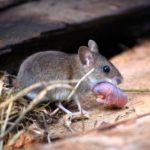What a mouse looks like: getting to know a large family
Every person has encountered mice and most likely saw them live. These could be decorative representatives in pet stores or pests in private homes. At first glance, they are cute and harmless, but the first impression is deceiving.
Content
Mouse (photo)
Description of mouse
Name: Mice (mouse)
Latin: muridaeClass: Mammals - Mammalia
Squad: Rodents - Rodentia
 | Habitats: | everywhere except Antarctica |
 | Features: | predominantly nocturnal, more often pests |
 | Description: | differ in size, food preferences and way of life |
Mice are a whole family of rodents. They differ in size, distribution and habits. On the territory of Russia there are 13 species.
is a frequent visitor house mouse indoors and vole on the plots.
- House mouse.
- Vole mouse.
Animals are active mainly at night and in the evening.
Most are herbivores, but they can also eat earthworms and invertebrates.
Several offspring per season, the number of individuals decreases in starvation conditions.
There are loners and social individuals that live in whole families.
mice and people
Mice are for the most part a pest to humans. They carry various infections that can affect humans and domestic animals. Besides, the harm from them is palpable:
- harm food;
- damage stocks of grain;
- spoil communications;
- litter and leave excrement;
- quickly multiply and adapt;
- in case of danger, they show aggression.
Mice live where there is food. And until it ends, they themselves will not leave the home.
Separately worth mark the batsthat are not related to their terrestrial relatives.
How to get rid of mice
Depending on what kind of mice have settled and in what part of the household they have settled, it is necessary to choose a protection strategy. The most common are house mice and voles.
Mouse in the house
In living rooms and rooms where food is prepared, mice often settle under cabinets, baseboards and in dark impassable corners. They are easy to spot. Mice leave traces of excrement and garbage behind them in large quantities.
How to deal with mice in the house:
Mice on the lot
The appearance of mice on the site can be observed firsthand after sunset. In large numbers, they no longer hide, but behave rather arrogantly. You can meet them in garbage collection areas, near compost heaps and near water bodies.
For destruction on the site use:
- plants that repel mice;
- poisons and poisons;
- repellers.
Here simple instructions for getting rid of mice in the country and in the garden.
What to consider
There are several different factors to consider when choosing a mouse repellent for your home and yard.
| Security | Chemicals should be used with caution and where pets and children will not have access to them. |
| Expediency | In some cases, sparing methods can be dispensed with, for example, poison in the garden will remain in the ground for a long time and can get into food. |
| Number of pests | With a huge infection, you need to act comprehensively or call special services. A few individuals are easy to catch. |
| Aftermath | After the poison, the corpses remain where I die and decompose. In the home, this is an unpleasant smell for a long time. With a live mouse, something will need to be done. |
| Simplicity and economy | A mousetrap is simple and effective, repellers are more expensive and require proper use. You need to use proven methods. |
How to prevent infection
Mouse families will be happy to find shelter in those places where they will be comfortable and have enough food. Therefore, it is necessary to conduct a household in such a way that there is no place for pests.
- Regularly check attics and cellars, keep the area clean and dispose of household waste.
- Monitor the condition of buildings, seal cracks and holes, use high-quality materials.
- Store food and supplies in closed containers out of the reach of mammals.
- Plant plants on the site that repel mice and maintain cleanliness.
- With a single appearance of rodents, it is imperative and quickly to catch them.
It is believed that cats and dogs living on the site do not get along with mice, so rodents do not go where they smell these animals.
Decorative mice
Decorative representatives are relatives of house mice. As a result of selection, they received traits that made them beloved by many pets. Decorative breeds differ in size and shades.
Their manners and behavior are captivating:
- they are sympathetic and dexterous;
- do not require a lot of space and time;
- easily get used to hands and company;
- easy to maintain, unpretentious;
- play and perform simple tricks.
These are ideal animals for those who imagine comfort only with a pet, but do not have much space and desire to mess around with them. But it should be understood that mice require a minimum set of amenities:
- cells;
- drinkers;
- bedding;
- toys;
- wheel for running;
- shelters and dwellings;
- branches for stitching.
They are active in the evening or at night, you need to be prepared for this. They are not loud, but noisy and nimble. Buying a pair is ideal, but if they are of different sexes, little mice will regularly need to look for a home.
Conclusion
Mice are garden and home pests. They eat stocks and spoil provisions. They must be dealt with quickly and immediately. And decorative ones will be an excellent decoration and leisure.

